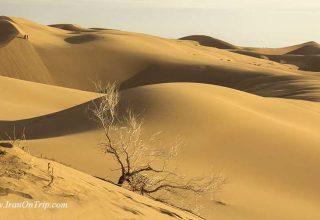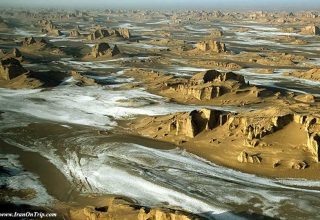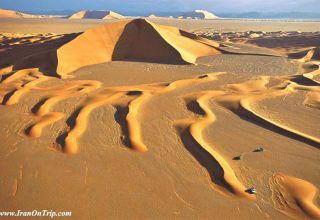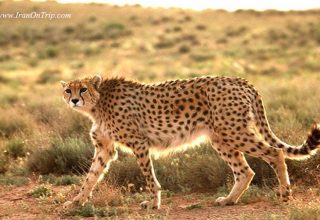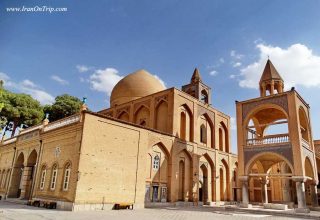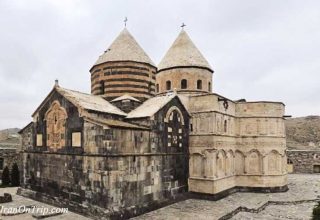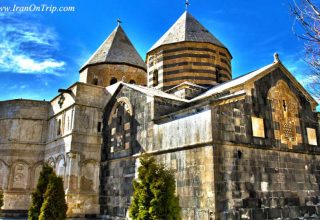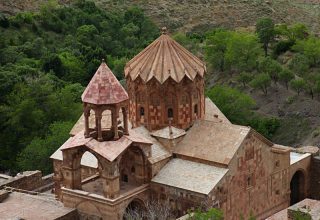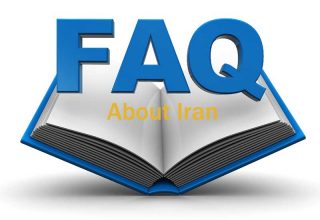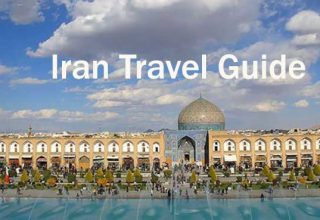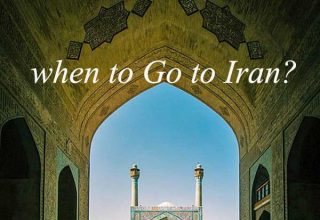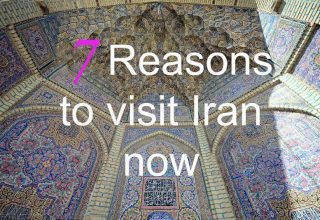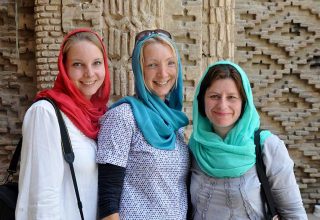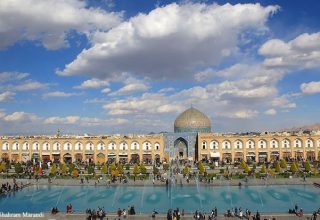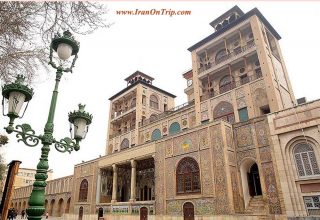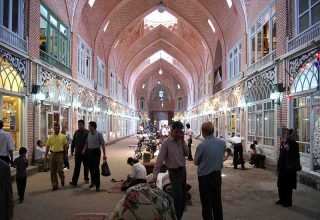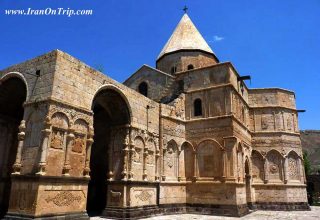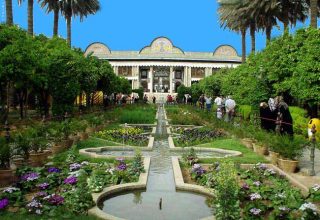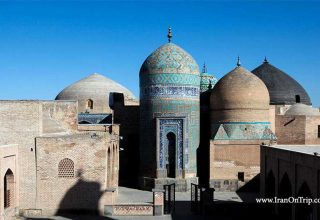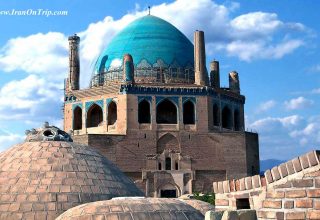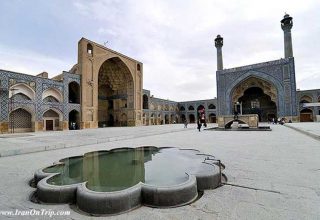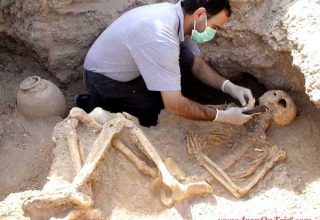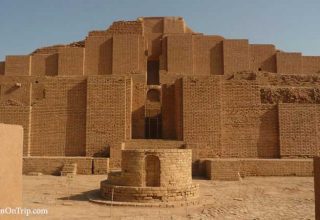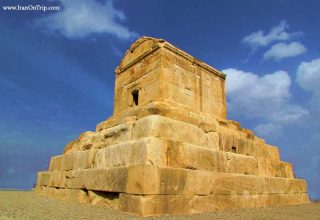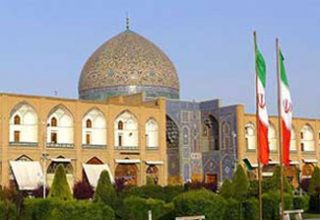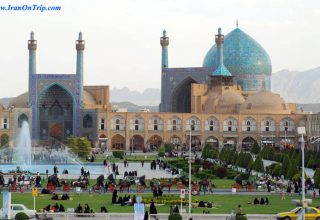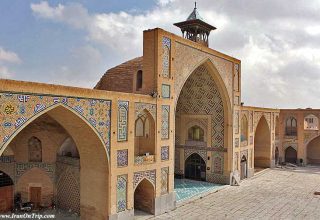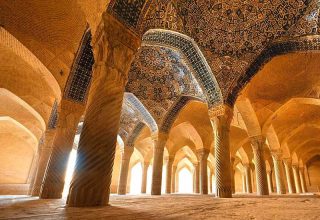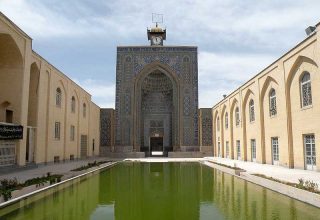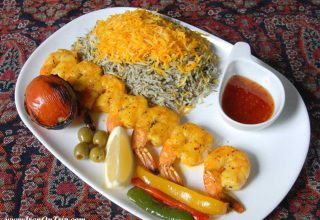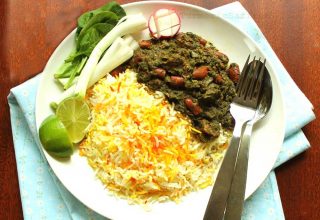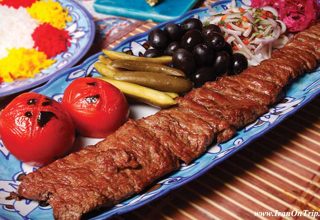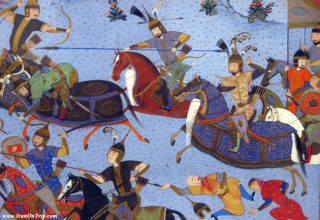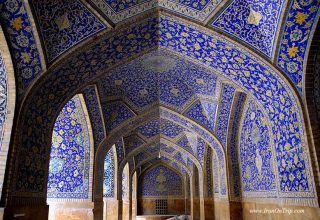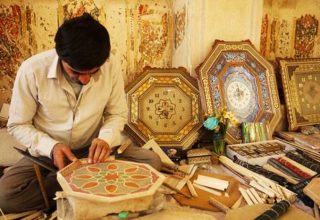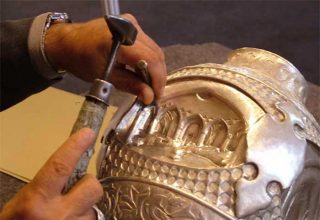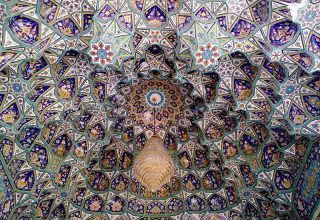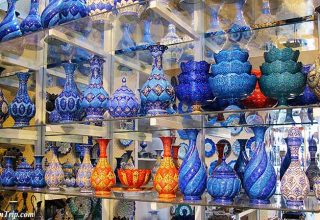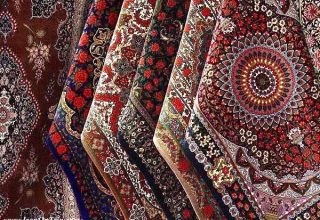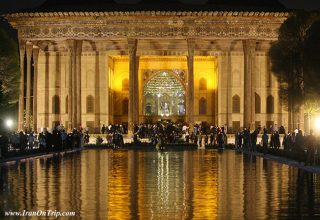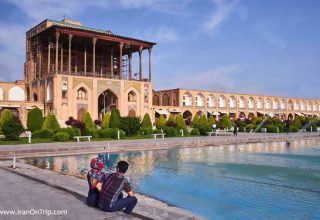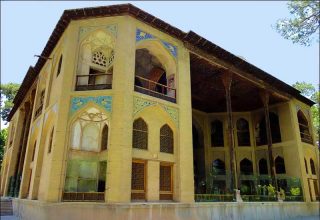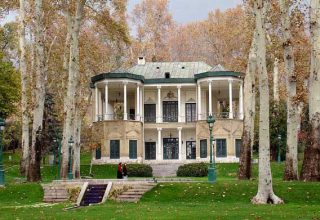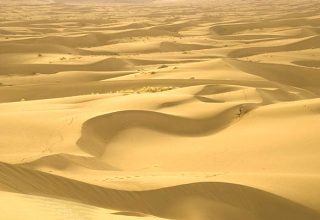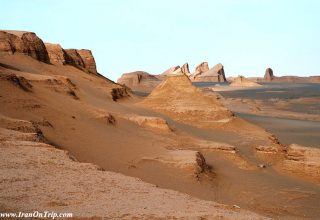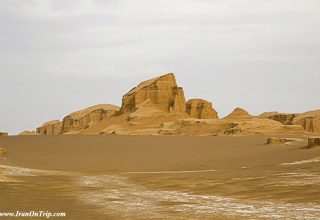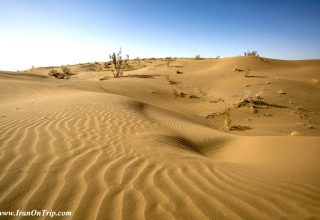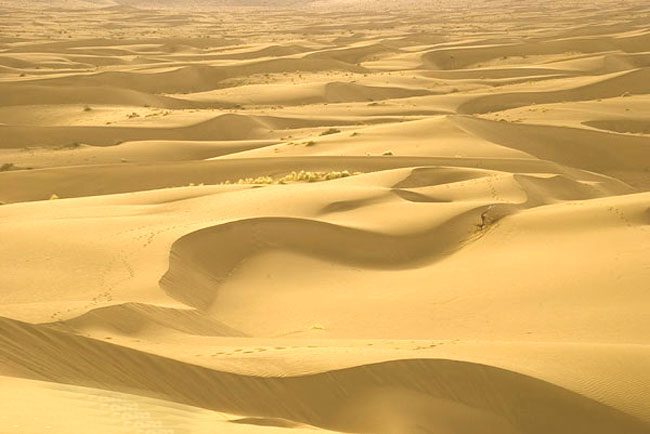
Iran is situated in a high-altitude plateau surrounded by connected ranges of mountains. The well-known deserts of Iran are at two major regions:
1) Dasht-e-Kavir, and
2) Kavir-e-Lut.
They are both some of the most arid and maybe hottest areas of their kinds in the world.
The Desert Pits of Iran
Kavir-e-Lut is the largest pit inside the Iranian plateau and probably one of the largest ones in the world. Kavir-e-Lut is a pit formed by broken layers of the earth.The maximum annual rainfall is approximately 100 mm there. The average altitude of this desert is almost 600 m above sea level (ASL) and the lowest point near “khabis” is almost 300m ASL. In Kavir-e-Lut, large amount of sand is always moving southward forming sand hills and running sand masses.Dasht-e-Kavir is a geological pit almost at the north of Kavir-e-Lut. The minimum altitude of this desert is 400 m ASL. The major part of Dasht-e-Kavir is covered by sand and pebbles and exposed to strong winds and storms that set salt-combined sand in motion like sea waves. At times, this phenomenon forms long sand hills of 40m high.From structural point of view, Dasht-e-Kavir is very much different form Kavir-e-Lut. The difference of temperature between days and nights during a year in Dasht-e-Kavir is between 0 and 70 degrees C.
The Ecological Conditions of The Desert
Some of the ecological features of the deserts in Iran are strong sunshine, relatively little humidity, little rainfall and excessive vaporization. Depending upon how far a point is from higher altitudes, temperature is varied.A point far from altitudes can reach up to 60 degrees C during summer. The average temperature during January and May are 22 degrees C and 40 degrees C respectively. In general, the ecological conditions of the deserts in Iran are so severe that they are not tolerable either in summer or winter.It rarely snow there. The annual relative humidity is below %30. During summer, it decreases, at times, down to %0. It usually rains during winter and sometimes showers that leads to wash away the earth. It goes without saying that there cannot be proper and enough soil and water for plants to grow. Since these regions are always open to winds and there are not sufficient plants to preserve soil, wind erodes the earth and brings about losses. Therefore, blocking winds by wood-made walls and planting shrubs and trees are carried out to confront the destructive natural forces.
Living Situation IN The Deserts
It is always water that determines life situation everywhere. Again it is only water that helps plants grow and people stay in an area within the desert. Water is not easily accessible at every corner of the deserts.Life goes on at the areas where water can be found in springs or through the ancient technique of making underground aqueducts called kariz (qanat). At times, semi-deep wells are dug to get water. So, desert dwellers make the most of the minimum water they get. Local people use the highly tolerant animals, camels, to travel through the desert. Usually vine or similar trees with deep going roots are planted so that they could survive.
Making a Living In The Deserts
People live only in oases in small scales and they rely on farming, herding animals and migrating. They have to plant wheat, barley, fruit trees and alike. In some areas, farming is also in vain. So, they have to make a living just by herding cattle. When neither of the above helps, they have to migrate to somewhere else in search for better living conditions.
Accommodation & Clothing
Sun-dried brick, raw mud and in some areas a limited quantity of stone are the only constructional materials used to build houses. Walls have to be built very thick for the sake of insulation and roofs have to be built in cupola or vaulted forms to last longer.People are usually dressed in bright colors and clothing is mostly made of cotton. They are loose and long unless people are influenced by city dwellers’ culture.Although the Iranian plateau forces its compelling situations, its inhabitants struggle for preserving living conditions. These hard working people, who have been struggling for thousands of years in the desert, will not give up so easily.
Written By: Rahman Mehraby
Desert And Its Specifications
A: Rain- The amount of yearly rain is low in deserts, most times less than 250ml. Some deserts in Africa pass years without rain!
B: temperature- Days are very hot(up to 60 centigrades) and night can be as cold as zero. This huge difference between day and night temperature makes desert life so hard.
C: Humidity and Evaporation- Humidity rarely becomes more than 60% while evaporation is very high.
D: Wind- Great difference between the temperature of the surface and layers of the air and lack of flora makes desert winds very powerful sometimes.
E: Native Flora- In many parts of deserts there is no flora and in the rest its mostly not jammed.
Types Of Iran Deserts
Each of the deserts in Iran belongs to one of the following groups:
A: Clay Deserts
B: Wet Clay Deserts
C: Clay and Saltmarsh
Area Of Iran Deserts
Iran Deserts cover about 34 million hectares of the 1648195 square km land of Iran. About 61% deserts, 24% Sand Dunes and 15% Sand hills.


